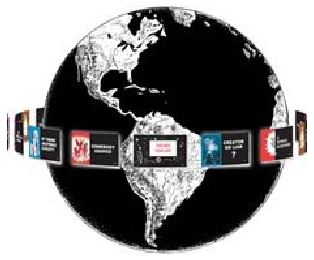New Spanish Bible Based on Trustworthy Texts
Another aspect of "the mission field coming to us," is the burgeoning Spanish-speaking population in the U.S. Nationwide, 50 million residents are classified by the Census Bureau as Hispanic. This is a larger mission field than many foreign countries. Few soul winners go out with tracts in their pocket without including some Spanish language tracts.
But once you lead someone to the Lord with a Spanish tract, which Bible do you give them? For years, Chick Publications shared this quandary in deciding which Spanish Bible to quote in Spanish translations of the tracts.
This issue grew as we became more aware of the problems with the modern English Bibles. When we began to find scores of changed words, as well as phrases and whole verses missing from many Bibles, we came to realize that the only complete Word of God in English was the one from the Textus Receptus stream of manuscripts, the King James Version (see "Did the Catholic Church Give us the Bible?" and "Look What's Missing").
As we shared our concern that the newest Spanish Bibles were following the Alexandrian stream of polluted manuscripts and modern re-interpretations of scripture, some Latin American missionaries suggested we look at a new version in the works that promised to return to the Textus Receptus base and the historical meanings of words. We discovered that the project was being coordinated by a Mexican pastor and church planter, Humberto Gomez. He had become aware of some of the deficiencies in the popular Reina-Valera Bibles when a friend showed him how important words and meanings were changed from historically approved Bibles, including the original Valera Bible. Curious, he began compiling a list of these changes. As his list grew, he invited fellow missionaries and pastors to assist in his research. Using the internet, they began to share their findings and glean input from a wider and wider circle of associates. Eventually, well-known linguists and Bible scholars began joining the project. They decided not to try to produce a completely new version, but to use the 1909 Antigua Reina-Valera as their base text for correction.
Finally, in 2004, they put together a working copy, called it the Reina-Valera Gomez, and published it, inviting further reviews and/or criticisms. Of course, criticisms were loud and sometimes unkind but Gomez carefully considered each one, sorting out the legitimate concerns from the carping.
For another five years, he and his internet team across 13 countries continued to refine the text, not only for accuracy, but carefully preserving the unique beauty of the Spanish language.
Not until 2010 did they feel that they could release a final text for regular publication. The result is the RVG 2010, printed and distributed by several publishers. Chick Publications chose to print a paperback edition, distributing it along with hardback and leather-bound editions. As with any new version of the Bible, there is much discussion, pro and con. But a flood of corrupt Spanish Bibles have been released. And, just as many are beginning to see the deficiencies of the modern English Bibles, so in the Spanish Christian world, there is a growing appreciation for a Bible that is fully trustworthy to the best original texts, the Textus Receptus stream of manuscripts, and the correct, historical meanings of those words.
Dr. Gomez is to be commended for patiently enduring the darts of criticism and persevering in giving to the Spanish-speaking world a complete Bible that can be fully trusted to be the faithful Words of God.
- See more articles on related topics:
- Bible Versions
- History of Preservation
- Spanish Bibles
Other Articles from November/December 2011:
More on Bible Versions:
Products of Interest:
-

Look What's Missing!
256 pages
For years, publishers have been removing words, and even whole verses, from modern Bibles. What's missing from your Bible? Take a look! -

Why the KJV Bible is the Perfect Word of God.
48 pages
This unique five-lesson Bible study workbook builds people's faith in God's Word, the 1611 King James Bible. Great for home groups, Sunday School classes, and new converts. -

If The Foundations Be Destroyed
98 pages
What does the NIV have against Jesus? Is your Bible missing important verses and doctrines? If it is an New International Version there's a lot missing!



